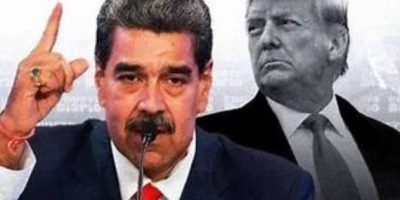Perils of Social Media and EU Report

Social media helps people to isolate themselves in ideological niches by seeking and consuming only information consistent with their views. The internet helps eliminate the barriers of distance and creates a sense of community beyond borders. Acts of terror are promoted and shared and watched in real time like the mosque shooting in Christchurch which was live-streamed on Facebook. Online video games are used to entice and indoctrinate young players to hate ethnic minorities. The games are modified versions of classic videogames in which the original enemies were replaced with religious, racial and ethnic minorities.
There are plenty of historical evidences implicating the traditional media for acting as a propaganda tool for hatred leading to ethnic rifts and producing turbulence in society. Printing technology gave rumours a legitimacy. In the 16th century Italy, rumour about the Jewish people drinking children’s blood circulated on printed pamphlets. Today, those rumours are considered the precursor to anti-Semitism in the world. Der Stürmer, a weekly tabloid, was found to have “injected into the minds of thousands of Germans a poison that caused them to support the National Socialist policy of Jewish persecution and extermination”. Like Der Stumer, Kangura, a Rwandan tabloid, spewed out hate and fabricated stories against the Tutsis preparing the population mentally for killing them.
Broadcast technologies have also been misused to spread hate, which is most visibly in Rwanda where the majority Hutus massacred the minority Tutsis. Social media also played a dirty role in Rohingya ethnic cleansing in Myanmar. The UN put blame on Facebook for playing a role in spreading hate speech amid the mounting Rohingya crisis. Marzuki Darusman, who led the UN Fact-Finding Mission, stated that social media played a determining role in the crisis.
Digitization of “text and images” increases their availability, makes them more toxic, more lethal and their impact on society and nations more profound than the previous print versions. The conversion of ink into hypertext has increased violent crimes, hate speeches and propaganda, and enabled the extremists to disseminate it much effectively to its audience. Shrinking of time and space has bestowed upon the text and images the magic power eliciting a massive public reaction and social impact. The massacre and promotion of hate crimes against Muslims in Manymar, Gujarat, Delhi, and the street protests in response to George Floyd’s killing by a police cop in USA is testimony to the fact that media is a powerful mover and shaker of society – a double edged sword.
Metamorphosis of the traditional media into different types of social media platforms (Facebook, Twitter, Instagram, Snapchat, WhatsApp, YouTube, Periscope, Vimeo) has increased the flow of information making it easier for extremists and policymakers to influence and radicalize the youth and sections of society by manifolds. By October 2020, 4.59 billion people had access to internet. With zero or few gatekeepers the flooding of hypertext was almost uncontrollable. With the introduction of 5G, a new dimension has been opened; 5G can elevate data speed by up to 100 times and reduce latency from 20 milliseconds to one millisecond. User is now able to download entire season of a TV series in less than a minute.
The terrorist/ extremist organizations are exploiting media technologies for radicalizing populations to achieve their ends. This has become a disturbing phenomenon in the crisis situations, war zones and peace times. Gabriel Weismann from the University of Haifa states, “Nearly 90% of organized terror activities on internet takes place via social media. Terror groups use social media to spread messages, recruit members and gather intelligence.” Similarly, fake or distorted news is easy and cheap to produce/ disseminate on social media. Boutros-Ghali was once quoted as complaining that “CNN is the 16th member of UN SC”. Policymakers provide a more complex view of the CNN effect. Colin Powell said, “Live TV coverage doesn’t change the policy, but it does create environment in which policy is made”. The body of 3-year-old Aylan Kurdi, a Syrian refugee, lying face down on a beach in Turkey, changed the entire media debate. Likewise, Rwandan cultural anthropologist Charles Mironko analyzed the confessions of 100 genocide perpetrators. His work confirms that hate messages had an effect on the dehumanization of population that was subject to persistent slander.
Indian media in Gujarat printed fake news like “Khoon Ka Badla Khoon” (Avenge Blood with Blood) to provoke, communalize and terrorize people resulting in the massacre of Muslims. Sandesh published fabricated reports before the killings, promoting violent Hindutva policies. Genocide Watch issued genocide alerts for Muslims in Kashmir and Assam. Anti-Muslim venom on Indian social media indicates a serious move by RSS to instigate Hindus against Muslims. “Preparation for genocide is definitely underway in India…next stage is extermination that’s what we call a genocide”, said Prof Gregory Stanton, the author of The 10 Stages of Genocide. EU Disinfo Lab’s recent report reveals how India since decades has been engaged in spreading fake or distorted news from the soil of EU, using names of nonexistent individuals and some Pakistani figures. This report should have created a storm in the local and international media, but, again, because of effectiveness of Indian media’s propaganda brigade, Pakistani print and electronic media as well as its foreign office have failed to exploit this heinous crime by Indians agencies. The realization on part of Pakistan’s security establishment, as Gen Bajwa had mentioned many a time, about the hybrid war is a good omen and hopefully they are doing their utmost to thwart and frustrate such kind of onslaught.
At the same time there is a need to ask social media to have a self-check, too. The World Economic Forum, in 2014, called misinformation one of the 10 greatest perils confronting the society. “It sows the seeds of hate, waters them and harvests them”. Social media has become the most powerful news disseminators. Technology serves not only to amplify disinformation and hate but also creates the scope for its automated spread. This sort of tech has no use for borders. So, people and machines in Ukraine can influence public opinion in USA. Russian agencies can interfere with the US electoral process. The Cambridge Analytica scandal shows us how easy it was to manufacture biased info and target it to specific population groups to help Trump win the election.
WHO, citing 50 years of research on imitation, has posted media guidelines on reporting suicides to prevent imitational suicides. The guidelines include suggestions such as not sensationalizing suicide (e.g. suggesting an “epidemic”), avoiding prominent headlines, not repeating the story too frequently, not providing step-by-step descriptions of methods, limiting use of photographs and videos, etc. Reacting to such pressures Facebook, Reddit, Google, LinkedIn, Microsoft, Twitter and YouTube have issued a joint statement to check misinformation. The rules will also ban tweets in which people play armchair doctor and make claims like, “If you have a wet cough, it’s not coronavirus, but a dry cough is.” Social media played a vital role in politicizing Covid-19 and generated fake cures or myths about it. In India, Muslims were accused of Corona Jihad spreading the virus to Hindu population. Indians blamed Pakistanis for sending Corona terrorists for infecting Hindus. Muslims were burnt alive or lynched to death due to propaganda on Indian media which urged Hindus to boycott Muslim merchandise.
Accuracy and elimination of fake news/propaganda content is critical for growth and ensuring media credibility and harmony in society. To ensure credibility, Facebook has decided to have stringent rules to check and identify harmful misinformation in collaboration with International Fact-Checking Network (IFCN). Twitter is labeling and issuing warnings for tweets that violate its policy. CrowdTangle is a public insights tool from Facebook that makes it easy to follow, analyze, and report on what’s happening across social media.
(The author is visiting lecturer at Bahria University)
Related News

Power, Oil, and Pressure
By Muhammad Omar Iftikhar Distrust has long defined U.S.–Venezuela relations. What began as political disagreementRead More

Address of the President of Uzbekistan – stratetic vector of the country’s future development
By: Eldor Aripov The President’s annual address represents a strategic pivot for Uzbekistan, transitioning fromRead More


Comments are Closed